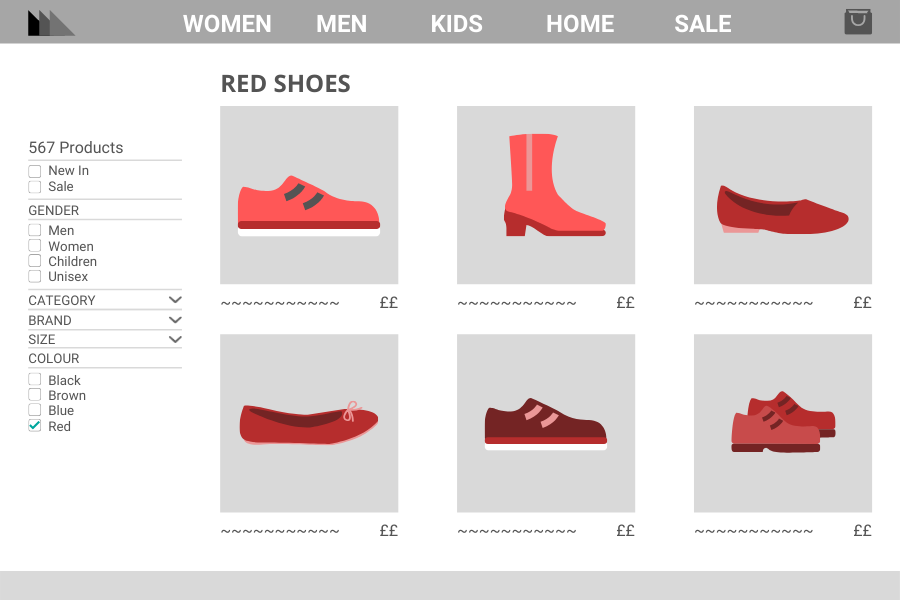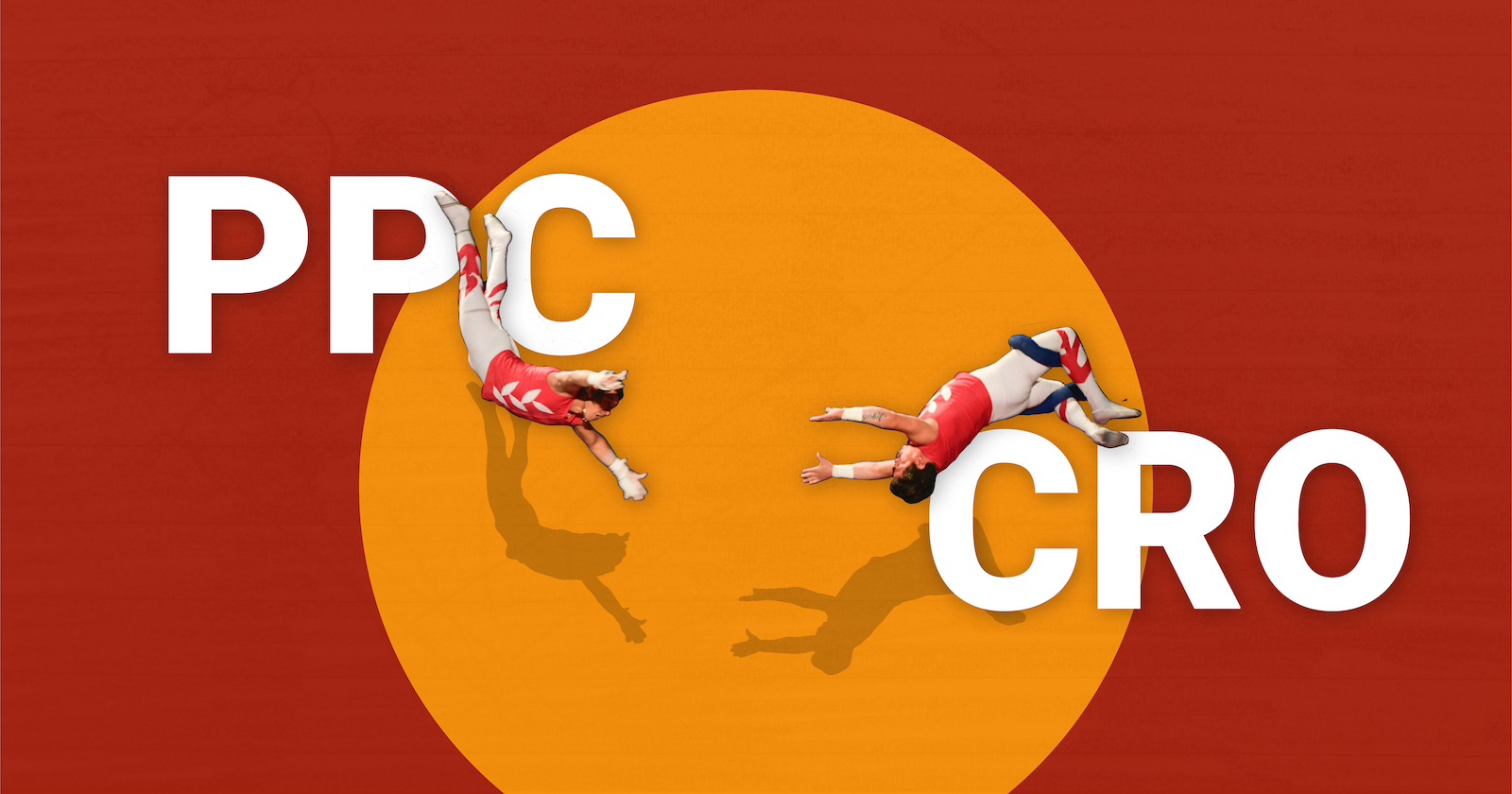Paid search advertising (PPC) and conversion rate optimization (CRO) are both great for boosting business performance in their own right.
Going a step further and combining their insights, however, can make them greater than the sum of their parts.
By sharing your findings between the two to combine paid search and CRO into one strategy, you can drive the very best results.
While they may be separate digital marketing activities, there is considerable overlap in implementation.
Both incorporate extensive data analysis, analyzing past account performance to make predictions going forward. They also rely on testing – trialing out changes and using the successes to incrementally boost your KPIs.
Most importantly, PPC and CRO both work primarily towards the same aim: conversions. That might be calling your call center, filling in a web form, or buying the product you’re selling.
Combining these two digital marketing powerhouses together you can really help supercharge your conversion rate.
The Power of CRO
If you aren’t already doing CRO, you really should be.
It aims to decrease “friction” along the customer journey by making landing pages more user-friendly and relevant.
By making the path to conversion more appealing, CRO is one of the most powerful tools for boosting digital marketing performance. One client at my agency saw a 47% uplift in conversions from the introduction of a CRO strategy alone.
It’s well known that CRO improves your PPC performance. This is because an increase in conversion rate lowers your cost per acquisition (CPA).
Put another way, if your costs remain the same but you win more conversions, you increase your efficiency of spend.
If you use CRO to make your landing pages more relevant to your search ads, you will also raise your Google Ads Quality Score.
This, in turn, lowers cost per click (CPCs) and increases spend efficiency – you would get the same number of clicks at a cheaper price tag.
The Power of PPC
If you know how to properly apply your PPC insights, this relationship can work the other way around, too.
Paid search data revolves around who your customers are and what they’re looking for, so you should absolutely be using this information to tailor their experience on your website.
Not sure where to start?
Here are my top five tips for feeding your PPC insights into your CRO strategy.
1. Quality Score
You should start by using Quality Score (QS) information in Google Ads to decide where to focus your CRO efforts.
QS depends on a few key factors: expected click-through rate (CTR), the relevance of your keyword to its ad group, and the landing page experience.
The final one is key here. Not only can you see a Quality Score column in Google Ads, you can also add Landing Page Experience as a metric.
This is Google’s measure of how useful and relevant the landing page at the ad’s final URL is to those who click on it.
Look for keywords with high click volume but low Quality Score; their Landing Page Experience ratings are likely to be low, too. This is because these keywords already have optimized ad relevance, but their landing page quality or relevance is lacking.
On this information alone, you know that their landing pages need improving.
It isn’t going to tell you what to change, but it will tell you which pages need to be improved so you know where you should prioritize your CRO testing and optimization.
2. Keywords
As search queries trigger ads through keyword matching, your keywords are a great indicator of customer intent.
By cross-referencing keywords with the landing page the final URL sends the user to, you can find further room for website improvement.
This requires evaluation of how far the landing page matches the expectation of the search query that triggered their keywords.
For example, if someone searches “buy red shoes” and comes through your exact match keyword, it would be most logical to send them to a page that lists only red shoes.
A page displaying shoes of all colors is going to make it more difficult for the user to find what they’re really looking for.
This page would likely impact your conversion rate due to drop off: instead of sifting through irrelevant search results, the user might opt to look elsewhere.
To make these pages more relevant to your keyword, you’ll need to test copy and page changes.
Start by trialing keywords in the page copy to make the landing page more relevant, or consider having final URLs directing to pages pre-filtered for relevant products, as below.
The more specific the keywords, the more filters you can test to see their impact on conversions.
Bear in mind: you might not want to filter according to your customer’s demographic characteristics.
Demographic information can be very helpful.
However, for some verticals (such as retail), users are not always searching with themselves in mind.
Sending male customers who search for “buy red shoes” to a page pre-filtered for men’s red shoes, for example, would make that landing page less relevant to men buying women’s or children’s shoes.
Other assumptions such as size or price could also limit conversion rate.

3. Ad Copy
It’s well known in marketing that consistent messaging is key to building user trust.
Your keywords should feature in your ad copy for consistency with search queries.
Ideally, you’d also have those keywords and/or other elements of your ad copy featuring on your page.
This might include aligning your Search ads with dynamic page headlines, or repeating calls to action again on your site.
If you have recently changed ad copy based on A/B testing insights, it could also impact your conversion performance.
Test out these different avenues for improvement.
4. Demographics
Although demographic characteristics don’t always predict user intent, they can still inform tailored landing pages.
Google Ads has a wealth of valuable data on how different demographics perform towards your KPIs.
This is especially true if you are using Smart Bidding – Google’s machine learning algorithms are sophisticated enough to comprehensively understand which user characteristics predict high intent to click and convert.
Just as you can use demographic data for targeting in Google Ads, you can also leverage this information to create personalized landing page experiences for:
- High-performing user demographics.
- Or groups whose behavior you’d like to modify.
The most obvious examples are age and gender.
If the 18-24 demographic has a high CTR but tends not to convert, you could test advertising discounts or sale products on a personalized landing page for this demographic segment.
You might find that prices were putting them off, or you could discover that regardless of discount deals they don’t convert as the products themselves aren’t of interest.
This will give you further insights to feed back into your PPC strategy. Similar logic would apply if this performance pattern were true for one gender and not for another.
You can also use your Google Ads in-market and affinity audiences in Google’s Optimize.
If you sell hotel packages, for example, you could test personalizing landing pages for people in-market for a budget holiday.
This might mean placing ‘featured’ budget deals at the top of the page, or sending them to a landing page pre-sorted in ascending price order.
5. Device
Another dataset to examine is device segmentation: how does your conversion performance vary by device?
Historically desktop performed better, often due to smaller data packages with phone contracts, slower mobile internet, and poorly optimized mobile sites.
These days, however, the majority of Google searches come from mobile devices. Mobile should, therefore, be prioritized not only in your Google Ads activity, but also for your website.
This is especially true for retailers, as mobile and tablet users outspend shoppers on desktop. A poorly built or optimized mobile site is basically money down the drain.
If you have lots of users coming through mobile but very few conversions, start testing to determine how your site is functioning on phones.
Perhaps your buttons are too small when rendered on mobile leaving, your website too awkward for a smaller screen?
Or maybe your site loads slowly on 3G connections as you’ve failed to compress images and CSS?
Combining your Google Ads device data with the contextual information you have about typical customer journeys will enable you to devise the most complete and effective testing plan.
6. Locations
Google Ads performance can vary heavily by location.
You’ll want to pay special attention to location variations when devising your CRO strategy if you’re a business with both online and offline conversions.
Consider testing variable ads and landing pages based on the location of the user clicking the ad.
If the user is near a store, you can highlight in-store deals or delivery options like free “click and collect”.
If your user is further away, test highlighting delivery speed, any free delivery offers, and online-only deals.
Better Together
PPC insights bring valuable data about your visitors; the keywords they come through, which devices they’re using, where they’re located – the list goes on.
These characteristics give us context for why users behave as they do when interacting with your site.
Using this data to tailor their experience on your site will enable you to devise the most informed CRO strategy, improving conversion journeys for site visitors who come through paid search.
As this relationship is reciprocal, investing the time and effort to apply your PPC data will drive continued growth.
At this time of year especially, incremental increases in conversion rate can translate to a huge revenue boost, while a lack of personalization caters to nobody.
More Resources:
- 6 Tips to Improve Your PPC Landing Page Experience (& Quality Score)
- 14 Conversion Rate Optimization Tactics You Can Steal From Amazon’s Product Listings
- 101 Tips & Tricks That Will Boost Your Conversion Rates
Image Credits
Featured Image: Created by author, November 2019
Screenshot taken by author, November 2019





